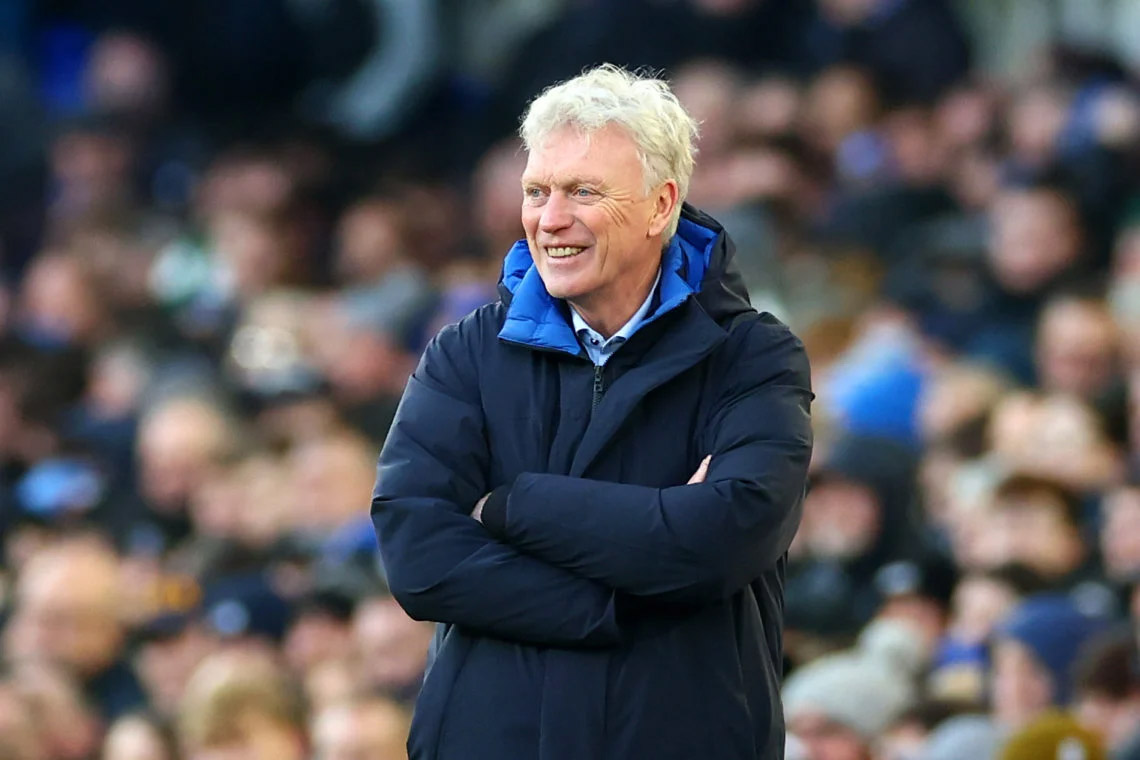David Moyes: Father figure returns to reunite the family
To me, in my era of watching the Blues, Moyes is the voice of reason, security, and relative success. We’ll certainly need his long-term thinking in the coming months but for now he has managed to instantly bring back the fun in functional, as well as those old family values that this house was built on.
At first glance, everything must’ve looked very familiar. The furniture might have moved around a bit, and there were some different pictures on the walls, but he didn’t need anyone to show him around. This is the house that David Moyes built.
Walking back through the Finch Farm front door and along the corridors must’ve stirred his steely soul. He said himself he was nervous being there for the first time in more than 11 years. His mind surely flicked back to the family he'd created, nurtured, and then left behind: the discipline, the characters and the culture. OK, there was never much money, but we were happy enough. Of course, there were hard times, raised voices, and mistakes, but name a family where there isn’t. Moyes’s Everton was upstanding and respected when he closed that door behind him in 2013.
Although it's the same bricks and mortar, this is a very different household in 2025. In some ways, it’s lucky there’s a house left at all. There have been spending binges, countless financial problems and a succession of questionable characters coming and going day and night. Although the last of the maxed-out credit cards have been cleared away and the expensive impulse buys have mostly moved on, David Moyes must be staring out of the window and wondering what on earth happened. The saying “he knows the club” has been bandied around a lot recently, but the fact is he doesn’t; it’s almost unrecognisable. He would never have stood for the past decade, and now this generation’s father figure is quickly trying to pick up the pieces.
Moyes’s recipe for gradual improvement has always been meticulous planning and improving people around him. But when he returned, the problem for a man who’s spent more time here than anyone else in modern history was that time was now against him. Firstly, there’s the transfer window. Although it’s a team that knows how to defend, there’s still a desperate need for creativity, composure and depth in forward positions. The more attacking minds at full back might have to wait. How will the manager who spends money like it’s his own deal with the possibility of having to take a quick punt? And how much direction will he get from the Director of Football? There are so many questions around what the club can and will do in these remaining hours before the deadline, but with the injuries picked up by Dominic Calvert-Lewin and Orel Mandala at Brighton, they may have to do something.
Secondly, there were 19 league games left in 2024/25 – 10 at Goodison Park, ever – when David Moyes came back. That didn’t leave a lot of room for trial, let alone error. He would have taken comfort in the fact it was almost double the number he had when he first walked through the door in March 2002, and the Premier League table was even more concerning back then. He first found Everton only out of the the relegation zone on goal difference. This time, 23 years on, we were two whole points above the line, and now that’s already nine.

Listening to Moyes being interviewed about his New Year’s Honour, and football in general, left some of us Evertonians feeling nostalgic and warm. To me, in my era of watching the Blues, he is the voice of reason, security, and relative success. Hearing him speak without another club’s badge on his chest made me crave the stability we’ve lost. I told him through my laptop screen – out loud – “I think I want you to come back”.
Within a week or so, he was here. My initial reaction was, of course, happiness and relief. I suddenly re-found a thirst for Everton content, and couldn’t wait for the next games to come. However, Aston Villa not only brought Moyes home, it also underlined the reality of the situation he faced. I thought he seemed particularly down in his post-match interviews. Would he be able to make decisions and work quickly enough to change this malaise? History tells us that his best work is done over years rather than weeks. The Everton anxiety was back.
The Tottenham Hotspur match was, obviously, different. Whether it was just the freedom of change or specific instruction, the players looked like they could breathe – we all did – until the last 15 minutes. Everton had felt so passive for months, but this was a bit like looking through those old family photo albums of better times. There was a connection, a purpose, a feeling of Everton. To see one of Moyes’s footballing sons, the ever-cool Leighton Baines, being so involved on the touchline made me smile. I’ll be honest, I can count on one hand the number of times I’ve genuinely done that watching my team recently. The final quarter of the match showed how exhausting it can be for players to suddenly be more involved in all parts of the game. All that passing, moving, running made for some tired legs and minds, and only emphasised how important it is that the squad is reinforced. But how wonderful that the fatigue came from attacking.
If Spurs was a thrill, Brighton was a throwback; gritty, structured, and organised but with the character of an in-form Talisman playing the pantomime villain. When Moyes first arrived at Everton he had Duncan Ferguson, who scored in three of their first four games together. Iliman Ndiaye – a very different type of player and personality, of course – has now done the same in the second-coming. The Senegalese is a tantalising glimpse of what the future might look like, but also an echo of the past, channelling Steven Pienaar or Kevin Mirallas – although Ndiaye’s ceiling possibly seems even higher than both of those predecessors. The 0-1 victory on the south coast felt like a very Moyes performance, but brought a very un-Moyes-like reaction. Our new-old manager beaming and celebrating with his hard-working players was a wonderful surprise, making me realise how much we’ve missed an emotional attachment to the team, and maybe how much he’d missed Everton.
And then, came Leicester. I’d forgotten how it feels to watch us comfortably beat a rival. Yes, there was the 4-0 against Wolves in December, but that never ever really hit these heights. To lead by three goals to nil at half time for second home game running is completely and utterly at odds with almost everything else we’ve seen this season, and it’s the speed of how Moyes has changed the parameters of what’s possible that takes some believing. The Foxes are not in a good place, I think that’s obvious, but to dismantle them with such coherence was a sight for very sore eyes. We’ve already scored several impressive team goals under Moyes, after struggling to score at all at times, particularly from open play.
The first three weeks of his second spell have felt like a strangely calm whirlwind, a revolution from a leader who’s known for evolution. We’ll certainly be needing that long-term thinking in the coming months to start shaping the new Everton, but for now David Moyes has managed to instantly bring back the fun in functional, as well as those old family values that this house was built on.
Reader Responses
Selected thoughts from readersAdd Your Thoughts
Only registered users of Evertonia can participate in discussions.
Or Join as Evertonia Member — it takes just a few minutes and will allow you to post your thoughts on artices across the site.


08/02/2025 14:35:56
Fair enough John. I get an uncomfortable vibe from the Dad thing but the points and frame of your position are well taken. Everton, and the love for it, was the unifying force rather than Moyes for me as I struggled with the personal attacks on Dyche. However, since no one can credibly claim that Moyes does not have Everton's best interests at heart, your father figure analogy is acceptable even to someone who opposed his return.